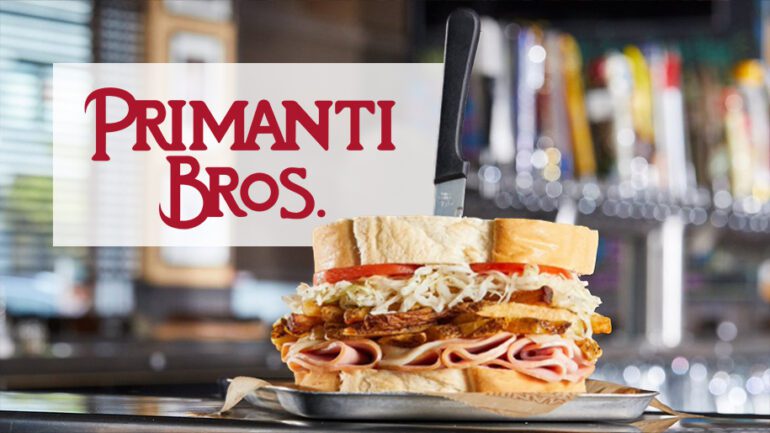TL;DR:
- Primanti Bros. integrates AI-driven RPA bots to optimize office processes.
- RPA bots streamline sales and labor reporting, saving time and money.
- IBM’s RPA bot collects data using AI, leading to hands-free reporting.
- Real-time insights empower management for swift decision-making.
- AI’s prevalence in business applications has risen to 52% in 2022.
- Service operations optimization is a key use of AI, reducing costs.
- AI-driven applications yield significant operational gains in the food service industry.
- Tradition meets innovation as AI simplifies back-office processes.
- RPA bots handle routine tasks, freeing managers from manual work.
- AI offers insights into trends and efficient resource management.
- RPA bots adapt to business fluctuations, ensuring agility.
- Primanti Bros. plans to expand AI implementation for financial analysis.
Main AI News:
In the ever-evolving landscape of the restaurant industry, the significance of harnessing cutting-edge technology cannot be overstated. Primanti Bros., an establishment renowned for serving hearty sandwiches for close to a century, stands as a testament to this transformative journey. While rooted in tradition, the brand’s gaze is fixed firmly on the future, with one particular asset taking center stage: artificial intelligence.
Amid the turmoil inflicted by the COVID-19 pandemic, Primanti Bros. faced the daunting task of preserving its operations. During these challenging times, survival itself was the paramount objective. A critical facet of achieving this survival was effective cost management, and it was here that artificial intelligence played a pivotal role.
The emergence of AI-driven robotic process automation (RPA) bots has bestowed upon Primanti Bros. a powerful tool to streamline and expedite the execution of mundane office tasks. RPA bots, equipped with advanced algorithms, have assumed the mantle of simplifying intricate and repetitive processes, driving not only increased efficiency but also substantial savings. Among the beneficiaries of this digital transformation are eight regional managers responsible for generating daily sales and labor reports across five locations. In the bygone era, this endeavor consumed a staggering 45 minutes per individual, culminating in 40 reports by the early hours of 10 a.m., encompassing weekends and holidays. A necessity for informed decision-making, these reports allowed managers to glean insights from the past to pave the way for the future.
Enter IBM’s RPA bot, an omnipresent force that harmonizes disparate platforms and systems, meticulously collecting fragmented data through the prowess of artificial intelligence. In a remarkable convergence of technology and operational finesse, daily sales and labor reporting have been rendered an effortless pursuit, significantly minimizing the margin for error. Armed with real-time statistics, the management team orchestrates swift comparisons of trends, expediting the formulation of daily strategies. The cumulative outcome of this innovation is a staggering annual saving of over 2,000 work hours and a financial infusion exceeding $80,000. In an industry characterized by razor-thin profit margins, such numbers are nothing short of transformative.
The embrace of AI is a microcosm of a broader business trend. The proliferation of AI integration in commercial applications has surged from a mere 5% in 2018 to a commanding 52% in 2022, according to McKinsey. The quintessential application of AI lies in the optimization of service operations, a reality substantiated by a Forrester survey, indicating that 69% of enterprises have effectively curtailed operational expenditures via AI-driven chatbots and automation.
In the realm of food service, the incremental advantages facilitated by AI-driven applications can swiftly snowball into monumental enhancements in efficiency. From automated reservation systems to mechanized burger-flippers and airborne delivery drones, AI has ignited a revolution. However, the environment at Primanti Bros. demands a careful balance between innovation and tradition. Flashy applications may dazzle, but the brand’s core focus is its enduring commitment to legacy. What transpired was a recalibration of back-office intricacies, masterminded by the RPA bot.
In the grand symphony of Primanti Bros.’ operations, the symphony resonates in harmony when the small yet pivotal notes are orchestrated to perfection. RPA bots, the virtuosos of mundane tasks, undertake duties that are time-consuming and often monotonous. Jimmy Hewitt, a senior automation advisor, aptly encapsulates this sentiment. Routine responsibilities like sales and labor reporting, transaction documentation, and inventory management are seamlessly delegated to these bots. The manual drudgery of copying, pasting, and spreadsheet validation, a breeding ground for errors, is now confined to the annals of the past. The era of real-time data is upon us, liberating the management team to adroitly identify trends and strategize.
In a broader vista, RPA bots aren’t just gatekeepers of efficiency; they unveil windows to insight-rich landscapes. Through trend analysis and data interpretation, RPA bots equip Primanti Bros. with invaluable wisdom, guiding decisions spanning scheduling, ordering, and inventory management. The interplay of AI algorithms, dissecting customer behavior, meteorological patterns, and diverse variables, heralds the ability to predict the demand for specific menu items. Irrespective of sales dynamics, RPA bots adapt seamlessly to the fluctuating tides of business requirements, ensuring a resilient response.
Conclusion:
The successful integration of AI-driven RPA bots by Primanti Bros. exemplifies how AI can revolutionize operational efficiency. With tangible benefits in time and cost savings, as well as enhanced decision-making capabilities, the market is witnessing a pivotal shift. This marks a larger trend in the business landscape where AI is not only optimizing service operations but also empowering brands to find innovative solutions, thereby redefining success in the food service industry and beyond.

